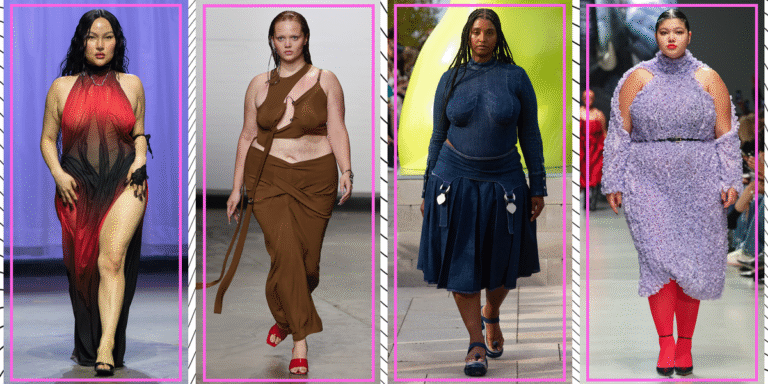The Decline of Body Positivity in Fashion
Despite the significant strides made towards inclusivity in recent years, the body positivity movement is struggling to maintain its momentum. A resurgence of interest in weight loss and smaller body types has pulled the fashion industry back to a troubling focus on ultra-thin standards reminiscent of previous decades. Just a short while ago, it seemed as though we were finally witnessing a shift; plus-size models like Paloma Elsesser, Precious Lee, and Ashley Graham were not just participating in fashion shows, but also commanding the spotlight as show closers and campaign faces.
Unfortunately, representation for curves has dwindled alarmingly. Recent statistics from London Fashion Week reveal a decrease in plus-size models from 80 in September 2024 to just 26 in February 2025. Similar drops have been witnessed in New York, Milan, and Paris, leading to critical discussions online among editors, influencers, and models about the authenticity of the industry’s commitment to size inclusivity. Was this embrace of diversity ever genuine, or merely a reactive trend to capitalize on the popularity of body positivity?
As a plus-size individual who loves fashion, the current state feels exhausting. It’s disheartening to see just one token curve model among a lineup of 40, with stunning runway designs that won’t be made in my size. In 2025, the notion of inclusivity still feels like an exception rather than the norm, leaving many of us yearning for genuine representation.
The Importance of Representation
Representation in fashion must extend beyond mere optics. It is crucial for all individuals to see themselves reflected in runway shows, ad campaigns, and available garment sizes. The fashion industry possesses the unique ability to influence cultural norms and redefine beauty standards. London-based designers like Karoline Vitto and Sinéad O’Dwyer are paving the way by casting diverse talent and emphasizing that beauty comes in all shapes and sizes.

Supporting brands that prioritize inclusivity is essential, but the responsibility does not lie solely with smaller, independent labels. Major fashion houses must equally embrace and portray a wide range of body types to foster a genuinely inclusive industry. Lasting change cannot occur unless all segments of the fashion world collaborate towards creating an environment that welcomes every body.
The Future of Body Positivity
Size diversity should no longer be viewed as a passing trend; it must become the standard. As we anticipate the upcoming fashion months, it is imperative to hope for a resurgence in authentic representation. The fashion industry has the power to shape perceptions and redefine what it means to be beautiful, but this potential can only be realized through collective action.
For a fashion world that truly embraces everyone, it’s vital to advocate for an inclusive society where every body type is not just welcome but celebrated. Let’s stand together and challenge the narrative, ensuring that body positivity transitions from a fleeting fad to an enduring foundation.
Follow Lauren Nicole on Instagram for more insights on body positivity and representation in fashion.

